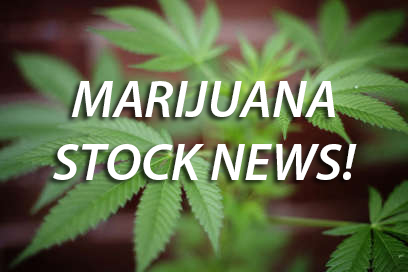Form 10-Q for TWO RIVERS WATER & FARMING CO
12-Nov-2014
Quarterly Report
Note about Forward-Looking Statements
This Form 10-Q contains forward-looking statements, such as statements relating to our financial condition, results of operations, plans, objectives, future performance and business operations. These statements relate to expectations concerning matters that are not historical facts. These forward-looking statements reflect our current views and expectations based largely upon the information currently available to us and are subject to inherent risks and uncertainties. Although we believe our expectations are based on reasonable assumptions, they are not guarantees of future performance and there are a number of important factors that could cause actual results to differ materially from those expressed or implied by such forward-looking statements. By making these forward-looking statements, we do not undertake to update them in any manner except as may be required by our disclosure obligations in filings we make with the Securities and Exchange Commission under the Federal securities laws. Our actual results may differ materially from our forward-looking statements.
Overview
There is a water shortage in the arid regions of the southwestern United States. There is a municipal water shortage in Colorado (see CWCB study). The Colorado municipal water shortage has created a price differential, an arbitrage, of 5-10 to 1 increase in the price of municipal water over irrigation water. In the late 1800s, 85% of all water rights in Colorado were granted to and still are primarily held by agriculture. Since then, populations have increased and people have moved to the city.
First generation western water business models attempted to capture the water arbitrage by “buying and drying” the most productive irrigated farmland and moving the water to the cities, which decimated some agricultural communities.
The buy and dry model has become politically, economically and legally untenable and is no longer capable of capturing the water arbitrage (see ). Two Rivers has built a new business model that reinvigorates, rather than ruins, agricultural communities and captures the water arbitrage in multiple stages through market transactions.
In the initial acquisition stage, Two Rivers acquires water rights through the purchase of irrigated farmland used for feed crop production and converts the farmland into fruit and vegetable crop production, which generate six times more revenue with better profit margins. In later stages, Two Rivers creates additional value for its shareholders by partnering with other economic activities in need of water resources. Those activities are as varied as the economy itself and presently include water augmentation programs to replace out of priority diversions, greenhouse development and leasing for licensed marijuana growers and establishing Metropolitan Districts to provide water to under-served communities.
Results of Operations
Our Consolidated Operations
For the three Months Ended September 30, 2014 Compared to the three Months Ended September 30, 2013
During the three months ended September 30, 2014 and 2013 we recognized revenues of $1,072,000 compared to $995,000, in the three-month period ended September 30, 2013. Our primary revenue source is from the sale of agriculture products grown by us. The sale of these products is highly seasonal and occurs primarily in the third and fourth quarter of the year. The increase of $76,000 is primarily due to additional freight revenue earned in the third quarter of 2014being shown in revenue, while in 2013, net freight was shown as a reduction in the direct cost of revenue.
Operating expenses during the three months ended September 30, 2014 and 2013were $831,000 and $1,500,000, respectively. The decrease of $669,000 is primarily due to a reduction of stock-based compensation of $583,000, a reduction in professional fees of $184,000 offset byan increase in labor expenses of $122,000 due to a workforce expansion. Therefore, for operations, during the three months ended September 30, 2014 and 2013, we recognized a net loss of $545,000 and $1,103,000, respectively.
Our non-operating expenses increased from $237,000 to $315,000 for the three months ended September 30, 2013 and 2014, respectively. The increase of $78,000 is primarily due to a $110,000 decrease of interest and warrant expense offset by a $108,000 increase in other income/expense and an $80,000 gain on debt extinguishment in 2013. The decrease of interest expense is due to the conversion of debt to preferred shares and the decrease in other income is due to a gain recognized on the recovery of an asset in the third quarter of 2013.
For the Nine Months Ended September 30, 2014 Compared to the Nine Months Ended September 30, 2013
During the nine months ended September 30, 2014, we recognized revenues from continuing operations of $1,087,000, as compared to $1,054,000 in revenues during the nine months ended September 30, 2013. Our primary revenue source is from the sale of agriculture products grown by us. The sale of these products is highly seasonal and occurs primarily in the third and fourth quarter of the year. The increase of $33,000 is primarily due to additional freight income earned in 2014being shown in revenue, while in 2013, net freight was shown as a reduction in the direct cost of revenue.
Our direct cost of revenue was $786,000 compared to $639,000 for the nine months ended September 30, 2014 and 2013, respectively. This produced a gross margin $301,000 compared to $415,000 for the nine months ended September 30, 2014 and 2013, respectively.
Operating expenses from operations during the nine months ended September 30, 2014 and 2013 were $2,924,000 and $5,085,000, respectively. The decrease of $2,161,000 is primarily due to: a $1,705,000 decrease in stock-based compensation expenses due to the cancellation of certain awards; a $577,000 decrease in professional fees due to investor relations and legal fees, and offset by a $125,000 increase in labor expenses due to workforce expansion. Therefore, for operations, during the nine months ended September 30, 2014 and 2013, we recognized a net loss of $2,623,000 and $4,670,000, respectively.
For the nine months ended September 30, 2014 and 2013, we recognized a net loss of $4,772,000 and$6,179,000, respectively. The decreased loss of $1,407,000 is due to the factors mentioned above and partially offset by an increase of preferred dividends of $1,130,000.
Liquidity and Capital Resources
To date, we have funded our operations primarily from the following sources:
Equity proceeds through private placements of securities of Two Rivers Water & Farming Company and certain of its direct and indirect subsidiaries;
Revenue generated from operations;
Loans and lines of credit;
Sales of residential properties acquired through deed-in-lieu of foreclosure actions;
Sales of equity investments, and
Proceeds from the exercise of options.
Cash flow from operations has not historically been sufficient to sustain our operations without the above additional sources of capital. As of September 30, 2014, we had cash and cash equivalents of $762,000. Cash flow consumed by our operating activities totaled $3.5 million for the nine months ended September 30, 2014, compared to operating activities consuming $2.6million for the ninemonths ended September 30, 2013. The increase in the cash consumed by our operating activities was largely due to greater cash expenses in operations, an increase in accounts receivable and farm product, partially offset by increase in payables and accrued liabilities.
Cash used in investing activities was $1.6 million for the nine months ended September 30, 2014 compared to use of cash of $1.3 million for the nine months ended September 30, 2013. During the nine months ended September 30, 2014, we purchased $300,000 of land, water shares and infrastructure, added $1,256,000 of equipment and added investments of $8,000. During the nine months ended September 30, 2013, we purchased $1.3 million of land, water shares and infrastructure, added $34,000 of equipment and sold equipment for $58,000.
Cash flows generated by our financing activities for the nine months ended September 30, 2014, were $3.7 million compared to $3.6 million for the nine months ended September 30, 2013. During the nine months ended September 30, 2014, we received gross proceeds of $4.7 million from sales of preferred units of our subsidiary TR Capital Partners, LLC and we incurred additional long termindebtedness of $274,000 in connection with land purchases. During that period, we paid $636,000 in preferred dividends and applied $569,000 to pay amounts due under certain notes.
We currently expect that our cash expenditures will increase for the foreseeable future, as we seek to further expand our farmland business and to initiate operations of GrowCo. As a result, our existing cash and cash equivalents and other working capital may not be sufficient to meet all of the projected cash needs contemplated by our business strategies for the remainder of 2014 and for 2015. To the extent our cash and cash equivalents and other working capital are insufficient to fund our planned activities, we may need to either slow our growth initiatives or raise additional funds through public or private equity or debt financings. We also may need to raise additional funds in the event we determine in the future to effect one or more acquisitions of businesses, technologies and products. If additional funding is required, we cannot assure you that we will be able to effect an equity or debt financing on terms acceptable to us or at all.
Critical Accounting Policies
We have identified the policies below as critical to our business operations and the understanding of our results from operations. The impact and any associated risks related to these policies on our business operations is discussed throughout Management’s Discussion and Analysis of Financial Conditions and Results of Operations where such policies affect our reported and expected financial results. For a detailed discussion of the application of these and other accounting policies, see Note 2 of the notes to consolidated financial statements included elsewhere in this Form 10-Q. Our preparation of such consolidated financial statements and this Form 10-Q requires management to make estimates and assumptions that affect the reported amount of assets and liabilities, disclosure of contingent assets and liabilities at the date of our financial statements, and the reported amounts of revenue and expenses during the reporting period. There can be no assurance that actual results will not differ from those estimates.
Revenue Recognition
We follow specific and detailed guidelines in measuring revenue; however, certain judgments may affect the application of our revenue policy. Revenue results are difficult to predict, and any shortfall in revenue or delay in recognizing revenue could cause our operating results to vary significantly from quarter to quarter and could result in future operating losses.
We have acquired water shares in Huerfano-Cucharas Irrigation Company, which is considered an intangible asset and shown on our balance sheet as part of “Water assets”. Currently, these shares are recorded at purchase price less our pro rata share of the negative net worth in HCIC Holdings, LLC. Management evaluates the carrying value, and if necessary, will establish an impairment of value to reflect current fair market value. Currently, there are no impairments on the water shares.
In 2012, we acquired a produce business, which is considered an intangible asset and shown on our balance sheet as “Intangible assets, net.” Management evaluated the purchase price of $1.0 million and allocated this price to customer list, trade name and goodwill. For a detailed allocation, please see Note 3 of the Notes to Consolidated Financial Statements included elsewhere in the Form 10-Q.
Capitalization of Certain Interest Expenses
As part of our GrowCo development operations, which began in July, the Company began to incur large construction costs which are capitalized. The related interest expenses incurred related to these expenditures can be capitalized as well per ASC 720-15. This guidance states that interest should be capitalized in relation to the following assets: (i) assets that are constructed or otherwise produced for an entity’s own use, (ii) assets intended for sale or lease that are constructed or otherwise produced as discrete projects, and (iii) investments accounted for by the equity method while the investee has activities in progress necessary to commence its planned principal operations. As the GrowCo assets classify under the second point, the Company began the process of calculating interest costs to be capitalized each quarter. Interest capitalization begins when the expenditures begin and interest is being incurred. Management independently determines the start point for each individual project when it commences. At the end of each quarter, management will then take the average accumulated expenditures for each project, multiplied by the interest rate on the associated debt (or the weighted average rate on all debt if no debt is specifically associated) to arrive at a capitalized interest amount. This amount will be booked as an adjustment to interest expense each quarter. Once the construction process ends and the asset is deemed ready for use, capitalization of interest will cease.
Impairment Policy
At least once every year, management examines all of our assets for proper valuation and to determine if an impairment is necessary. In terms of real estate owned, this impairment examination also includes the accumulated depreciation. Management examines market valuations and if an additional impairment is necessary for lower of cost or market, then an impairment charge is recorded.
Inflation
We do not believe that inflation will have a material negative impact on our operations in the foreseeable future.
MAPH Enterprises, LLC | (305) 414-0128 | 1501 Venera Ave, Coral Gables, FL 33146 | new@marijuanastocks.com






